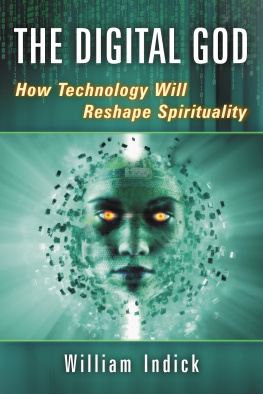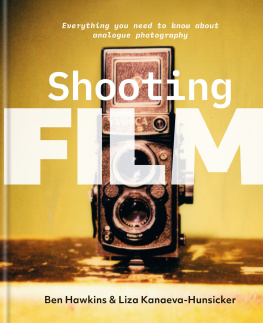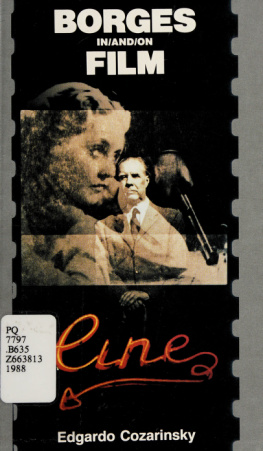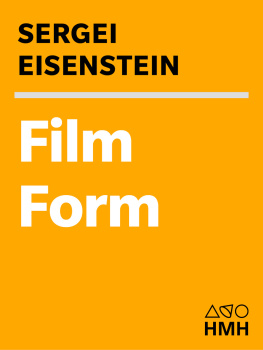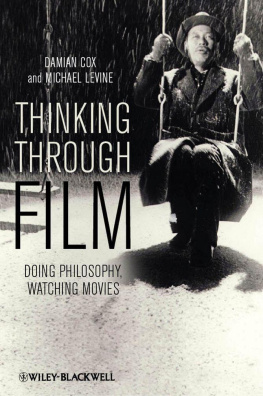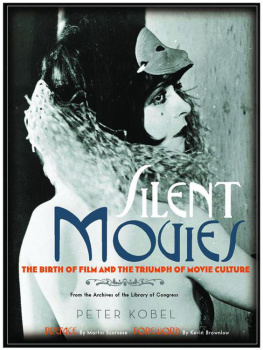Movies and the Mind
Theories of the Great Psychoanalysts Applied to Film
WILLIAM INDICK

McFarland & Company, Inc., Publishers
Jefferson, North Carolina
LIBRARY OF CONGRESS CATALOGUING DATA ARE AVAILABLE
BRITISH LIBRARY CATALOGUING DATA ARE AVAILABLE
e-ISBN: 978-0-7864-8092-0
2004 William Indick. All rights reserved
No part of this book may be reproduced or transmitted in any form or by any means, electronic or mechanical, including photocopying or recording, or by any information storage and retrieval system, without permission in writing from the publisher.
On the cover(inset) Colin Clive, left, and Boris Karloff in Frankenstein (Universal, 1931); background imagery 2004 Photospin.
McFarland & Company, Inc., Publishers
Box 611, Jefferson, North Carolina 28640
www.mcfarlandpub.com
For Michelle Kennedy
Table of Contents
Acknowledgments
I owe many thanks to Mustafa Lokmaci, a graduate assistant in the Psychology Department at Dowling College, for compiling the filmography, subject index and film index. Much of the information in the filmography was retrieved from the Internet Movie Database (IMDB.com).
Much appreciation goes to Jim Garbarino at Cornell University, Suzanne Johnson at Dowling College and Frank Madden at SUNY Westchester Community College for their mentorship, guidance and advice.
I owe a debt of gratitude to the faculty and administration of Dowling College in Oakdale, New York, for their support of my research and writing projects.
Preface
In this book, the psychoanalytic theories of Sigmund Freud, Erik Erickson, Carl Jung, Alfred Adler, Joseph Campbell, Otto Rank and Rollo May are applied to film analysis. The psychoanalytic approach to film analysis provides an in-depth process for unearthing the latent symbolism in film imagery. An appreciation of these elemental issue and symbols provides a fundamental understanding of film structure that is invaluable to filmmakers, screenwriters, psychologists or anyone with an interest in psychology or film. The distinct analytic approaches provided in this book offer an integrative and eclectic perspective that will help all readersnot just psychologiststo gain a deeper and more personal understanding of the films they view.
The idea for this book emerged from my needs as an assistant professor of psychology at Dowling College in Oakdale, New York (a small liberal arts college). My two lifelong interests have been psychology and film, so it seemed only natural that I should integrate my dual passions into an interdisciplinary course, Psychology in Film. A colleague in the psychology department expressed a mutual interest, so we created the course and proposed it to the college. The course would introduce undergraduate students to the major psychoanalytic theories by using films as the subject for analysis. It was designed to increase the students knowledge of psychology while offering a unique way to gain a deeper understanding and appreciation of film. The course was approved and scheduled, but there was only one problem: We couldnt find an appropriate textbook.
I searched and searched, but could not find any book that applied the major psychoanalytic theories to film analysis in an integrated, coherent and eclectic manner. For example, Jung and Film: Post-Jungian Takes on the Moving Image by Hauke and Alister (2001) focuses on film representations of Carl Jungs theories of archetypes and the collective unconscious. Psychiatry and the Cinema by Gabbard (1999) focuses on the role of the psychiatrist in the movies. Similarly, Psychoanalytic Approaches to Literature and Film by Charney and Reppen (1987), The Imaginary Signifier: Psychoanalytic and the Cinema by Mertz (1986), Screen Memories: Hollywood Cinema on the Psychoanalytic Couch, by Greenberg (1993) and The Analysis of Film by Bellour and Penley (2002) all provide traditionally Freudian takes on movies. However, I have not encountered a book that offers a comprehensive and eclectic approach to film analysis using a broad variety of theories and a plethora of examples from both classic and contemporary movies. My solution to the problem was an expedient one. I decided to write the book that I needed myself.
The theories, approaches and analyses in this book are inspired and drawn from the lectures and discussions from my Psychology in Film class. For the most part, each chapter represents the topics and ideas that would arise from single lectures or course sections. The first two chapters demonstrate how both Freudian and Jungian methods of dream analysis can be applied to film analysis. Drawing out the parallels between film imagery and dream imagery is a perfect introduction to the subject of film psychoanalysis, as the film viewing experience and dream experience are similar on many levels. In subsequent chapters, the focus turns to the psychoanalysis and deconstruction of the primary figure in most movies: the hero character. A Freudian interpretation of the hero is provided in chapter 3. The hero character is analyzed according to Otto Ranks theories in chapter 4, while chapter 6 provides Joseph Campbells model, and chapter 8 introduces an Adlerian perspective.
Chapter 11 applies Sigmund Freuds psychosexual stages to the horror film genre. Similarly, chapter 12 applies Anna Freuds configuration of the ego defense mechanisms to the family melodrama genre. And chapter 13 applies Erik Eriksons stages of identity crisis to eight different film analyses.
The other chapters in this book provide original theories and perspectives on psychological themes in film. Chapter 5 explores religious symbolism in films, chapter 7 traces the evolution of modern heroine characters in film history, and chapter 10 focuses on a handful of preeminent filmmakers whose monumental works warrant their ranking as modern mythmakers.
A leitmotif running throughout all the chapters is the concept that film constitutes an ongoing modern mythology for contemporary society. This concept is explained in depth in the introduction to this book, and readdressed on different levels in every chapter. The conclusion is an integrated, eclectic film analysis of one film, applying all of the different approaches and paradigms described in the previous chapters. The final analysis demonstrates that film psychoanalysis, just like clinical psychoanalysis and psychotherapy, is most meaningful when the process is flexible, open and inclusive of all approaches.
Introduction: Film as Myth
Our fundamental notions of a good story and character come from the elemental building blocks of our cultureour myths. Just as letters and words constitute the bases of our language, myths and legends constitute the bases of our modern characters, literature and art. Film is only the latest mode of storytelling in a long line of literary heritage. In a sense, there are no new stories, merely new ways of retelling the ancient themes and characters that have been told and retold for thousands of years. So, if we wish to analyze the movies that influence our minds and lives, we must break them down to the most basic elemental levelthe level of myth.
Myths and stories originate from the imagination, a part of the psyche that is mainly unconscious. Hence, myths and stories can be understood and analyzed as unconscious expressions. Sigmund Freuds greatest contribution to psychology was his ability to relate his ideas about the unconscious to the themes found in ancient myth. By relating neurotic conflict to the myth of Oedipus and the basic drives to mythological figures such as Eros and Thanatos, Freud revealed the link between the universal issues disclosed in myth and the personal issues repressed in the unconscious. In doing so, Freud uncovered the Lapis Philosophorum of psychoanalysisthe philosophers stone that converts latent unconscious material into manifest psychological issues.


